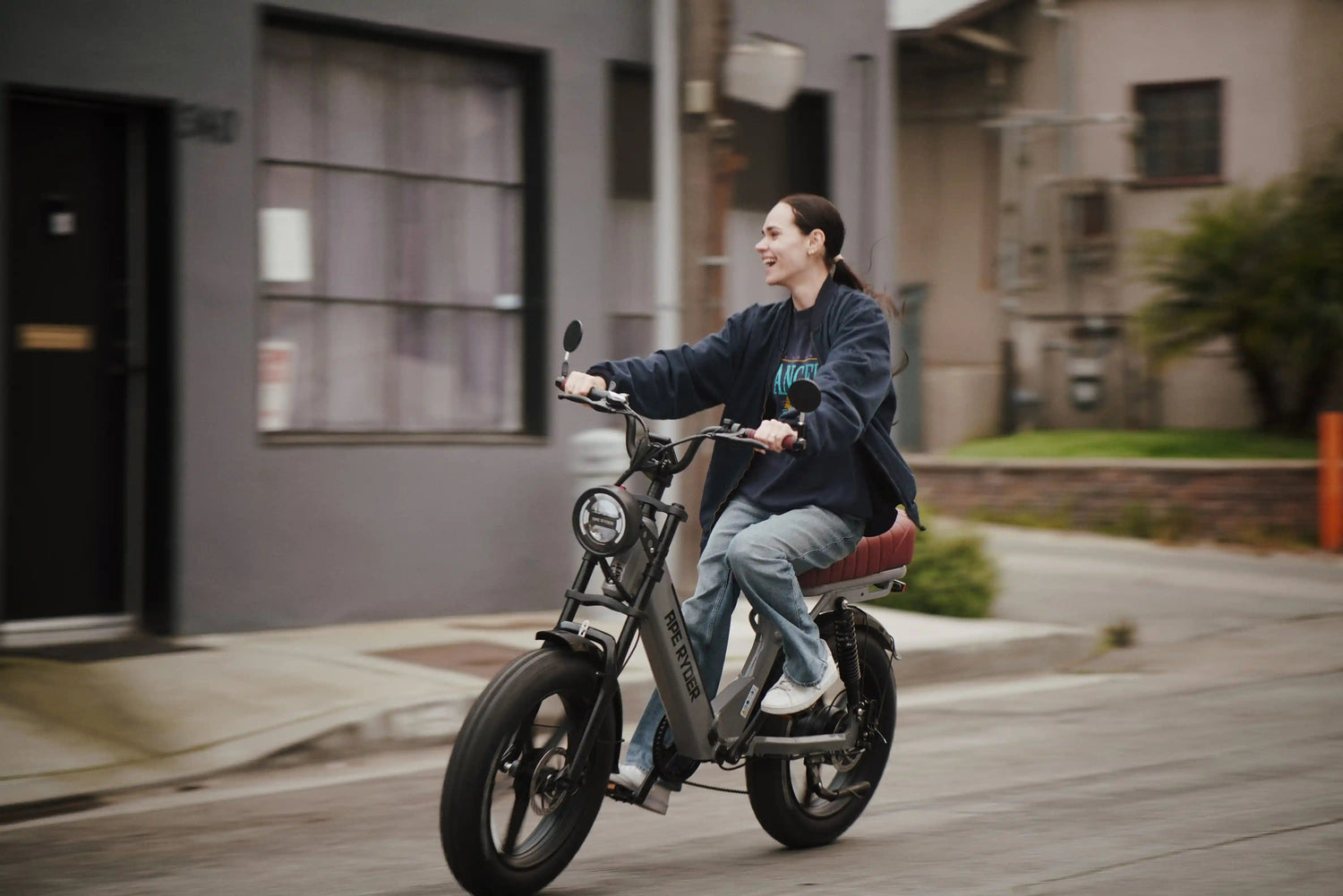Riding e-bikes is a fusion of some of the best of adventurous riding and environmentally friendly commuting. While e-bikes are fantastic machines for exploring nature or urban locations, they often create undesired pressure on your knees. The following article includes precious tips on how to save your knees when riding e-bikes so you will be able to further enjoy your rides without discomfort.
Knee Health is Important
Your knees are probably one of the most important joints in your body and to cyclists. They bear most of your body's weight and facilitate all kinds of flexibility in your lower body. When cycling, one uses the knees overtime; therefore, taking good care is necessary to prevent chronic injuries.
Such irritation can manifest in the form of knee pain, a hindrance to your cycling and general health. If you neglect the health of your knees, severe conditions such as arthritis or tendonitis can develop. Therefore, ensuring that you have knowledge on vital areas concerning knee health and some of the measures that you could take to protect them is quite important in enjoying the sport of cycling in the long run.
Keeping knee health in check regularly ensures that you continue to have the ability to go on with your cycling expeditions without a single hitch. You also get to improve your general physical fitness so that you may push your limits while staying out of harm's way.
Pick the Right E-Bike
The first step to protecting your knees is to choose an e-bike that will allow you to fit it to your body and riding style. An e-bike well-fitted to a person reduces unnecessary straining and allows one to enjoy comfortable moments in riding. Consider frame size and geometry while choosing an e-bike. Ensure the saddle height adjustment of the bike and positioning of the handlebars are modulable to match your leg length and posture. An ill-fitting or wrong e-bike could further deteriorate knee pains.
Moreover, go for an e-bike with adjustable pedal assist levels. This feature enables one to easily control the amount of effort required, hence less chance of overworking your knees, mostly on uphill terrains.
Proper Gear—Its Role
The right gear on one while riding the e-bike can make all the difference to your knee health. Proper cycling shoes and padded shorts could provide exactly that support and comfort for your long riders, and knee braces provide additional security. Cycling shoes with stiff soles distribute the pressure equally over your foot and reduce the impact of strain on your knees. Padded shorts will reduce friction, and some cushioning will further reduce stress on your knees.
Additional support from a knee brace or support will help provide additional stability if you have had any issues with your knees. These help guide your joints to their correct position, reducing the possibility of injury during hard riding.
Correct Riding Posture
Proper riding posture needs to be observed in trying to avoid knee ache. A neutral spine with slightly bent elbows and relaxed shoulders denotes comfort and efficiency on your ride.
Keep your knees very slightly bent while you are pedaling to avoid locked joints, which may cause strain or even discomfort. The height of the saddle should be such that it allows full extension of the legs without any overstretching.
Remember that your foot position on the pedal also matters. Place the ball of your foot over the pedal's center to distribute pressure evenly and prevent knee injuries.
The Power of Warm-Up Exercises
Warming up before a ride will get your muscles and joints in motion; this will help reduce the risk of injury. Simple leg swings, lunges, and calf stretches can make all the difference.
Leg swings loosen up your hips and get your knees ready for the cycling pedaling action. Lunges strengthen the muscles around your knees to provide more support during the ride. Calf stretches improve blood flow and increase flexibility in the muscles.
Understanding Pedal Assist
These e-bikes have various degrees of pedal assist, all of which directly impact your knee health. Knowing how to work this assist level effectively can keep you from overexertion.
On level ground, use lower levels of pedal assist to gradually build up stamina and strength. Add more when climbing uphill to save on knee stress.
Play with the assist levels until you find that sweet spot where you're working hard but still comfortable. Always keep an ear out for your body, and adjust to ensure comfort and avoidance of pain in this ride.
Interval Training: How it Can Benefit
One of the most valuable techniques to incorporate into your cycling regime is interval training. This simply means that when cycling, you switch back and forth between high- and low-intensity periods. This will build your cardiovascular fitness and the strength of your knees.
Now, during high-intensity intervals, push harder and pedal faster. At the low-intensity periods, slow down your speed and reduce the effort to allow your knees to recover. This alternation improves endurance without putting additional stress on the knees.
Interval training through rides will help you gain better resiliency and, in general, strengthened musculature, which helps with the overall bracing of the knee and reduces the possibility of injuries and pains.
Regular Bike Maintenance
This will help make every ride on your e-bike smooth and safe; you want to service your e-bike regularly. The worn-out parts or the misaligned components, with irregular tire air pressure, can lessen your bike's performance and put additional stress on your knees.
Check your bike tires at regular periods, its brakes, and the chain drive. Keep the chain lubricated and free of rust. The adjustment and alignment of components as appropriate will help in not allowing unnecessary stress on your knees. It enhances your riding experience and ensures your safety and knee health during the ride.
The Impact of Weight Management
It reduces pressure or load on your knees, thereby reducing the risk of pain and injury. More weight puts additional stress on your joints, and that is why you feel that discomfort while riding.
Incorporate regular exercise with a balanced diet and eating habits to maintain your weight. Cycling in itself is a low-impact great exercise for maintaining your weight. Keeping your weight in line secures better knee health and improves cycling performance with greater endurance.
Conclusion
Guarding your knees against strain while riding e-bikes is, therefore, the prerequisite of a pleasurable and pain-free experience. You considerably avert the possibility of knee injury by choosing the right e-bike, riding posture, and warming up exercises.









Leave a comment
All comments are moderated before being published.
This site is protected by reCAPTCHA and the Google Privacy Policy and Terms of Service apply.